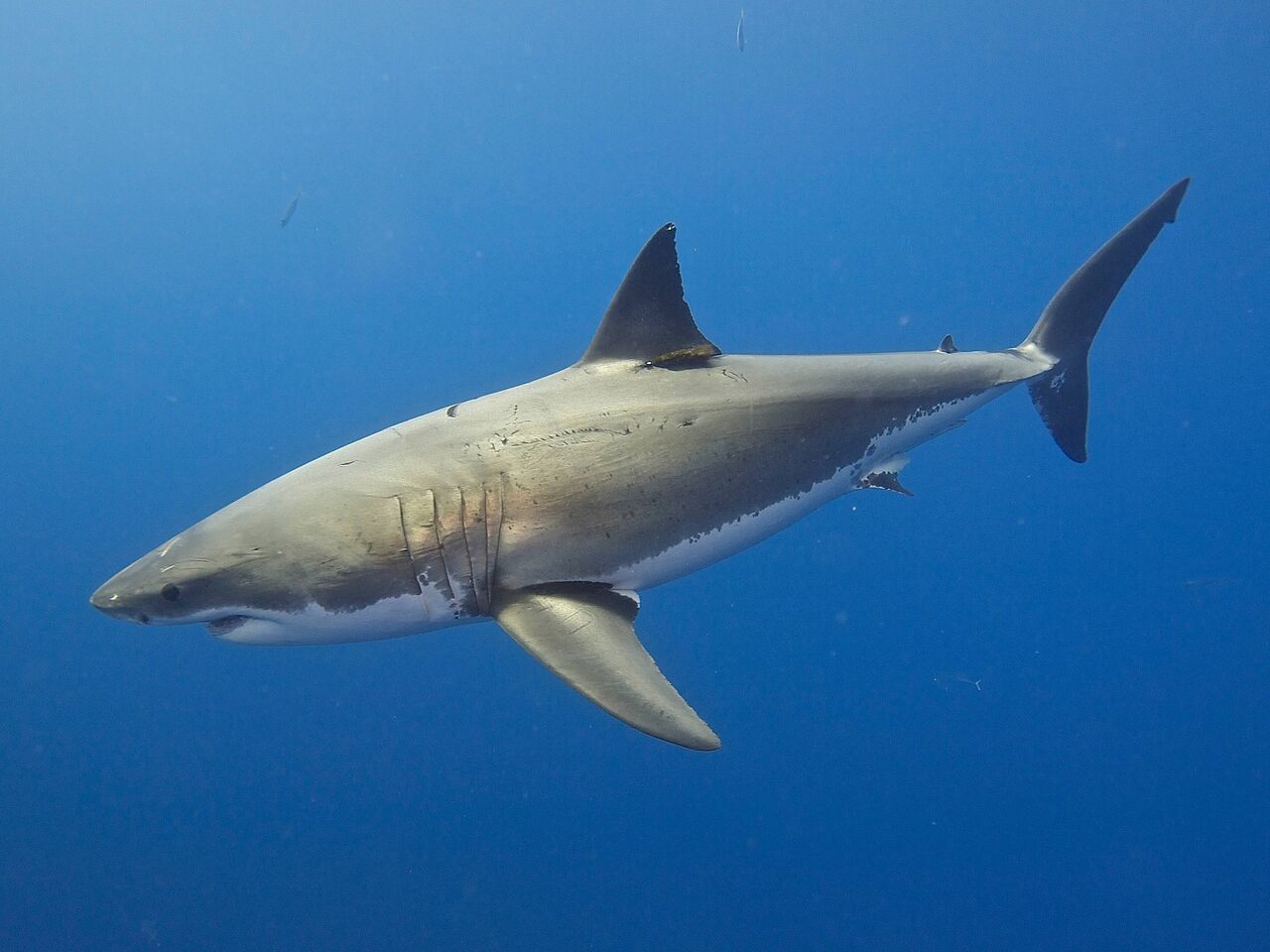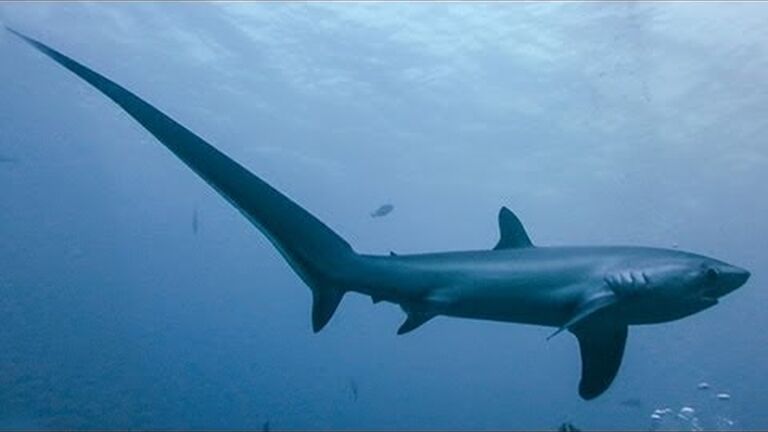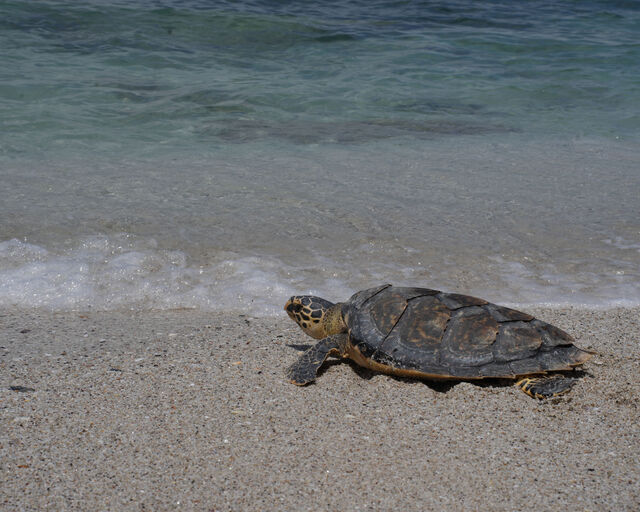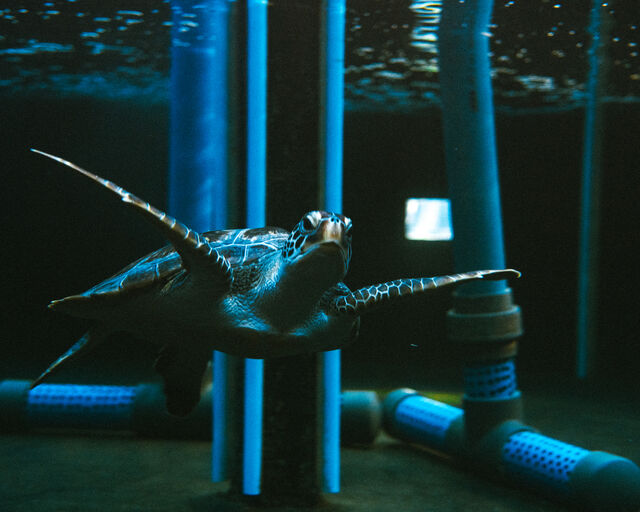South Africa is a country of diversity - our people, languages, animals, foods, cultures, music and much more are all a reflection of this. But, did you know that we are also one of the countries with the highest diversity of sharks too?
Currently, there are about 440 known species of shark in the world, ranging from the massive whale shark to the tiny dwarf lanternshark. Some sharks hunt with large serrated teeth, some use electric shocks, some use their huge tails to whip their prey, some are even covered in spikes like a porcupine or poop out glow-in-the-dark blue ink to frighten predators. These animals are amazing, and South Africa is home to 117 different types of sharks, representing all their major families.
A quick note before we get into this exciting run-down of South African sharks: When organisms are classified, taxonomists use the terms "order" and "family" to group connected species together - these are the terms you'll see below. An example of an "order" that you might be more familiar with is "primate", which would include you, all the monkeys and the apes. A "family" is a bit narrower and would be something like "the great apes", which would include humans, chimps and gorillas. With that monkey business taken care of - let's talk sharks!
Mackerel sharks are a huge order of sharks that include the stereotypical "shark" that you probably imagine when you hear the word, including the great white shark and the extinct Megalodon. But, there is way more to this group of sharks than you may realise! The one unique characteristic shared by all these sharks is that they have a higher body temperature than their environment and being "warm-blooded" enables them to either migrate into a variety of ecosystems or to be highly active in deep and cold waters.

Alopiidae aka. thresher sharks
Thresher sharks are a small family of sharks found in tropical and sub-tropical environments around the world. What makes them unique is their incredibly long tail fins that they use to whip and stun their prey, usually schools of smaller fish. In South Africa, we see all three of the major known species - the fox or thintail thresher (Alopias vulpinus) on the coast of KwaZulu-Natal, the pelagic thresher (Alopias pelagicus) in deep waters off our eastern coast and the bigeye thresher (Alopias superciliosus) around KwaZulu-Natal and on rare occasions on the West Coast too.
Lamnidae aka. white sharks
White sharks are probably South Africa's most famous shark family, most commonly represented by the largest predatory shark - the great white (Carcharodon carcharias). Sharks in this family are all proficient predators with large teeth and above-average muscle and weight compared to similarly-sized sharks from other families. This extra musculature either gives them extra strength for immobilising large prey, as is the case of the great white, or allows them to swim very fast, such as the mako sharks. In addition to the great white, which migrates along the entire South African coastline and well beyond, we also see the shortfin mako (Isurus oxyrinchus), longfin mako (Isurus paucus) and porbeagle (Lamna nasus).

Odontaspididae aka. sand sharks
If the white sharks are the celebrities of the South African seas, sand sharks are certainly the runners-up. Of the three species of sand sharks found globally, you've certainly heard of one - the ragged-tooth shark (Carcharias taurus), the ones we have at the Two Oceans Aquarium. Sand sharks all possess the ability to swallow air to adjust their buoyancy, allowing them to save energy when ambushing prey. Apart from ragged-tooth sharks, we also find the other two species of sand sharks in our waters; bigeye sand tigers (Odontaspis noronhai) and smalltooth sand tigers (Odontaspis ferox) both inhabit deep waters around our coast, but are rarely seen.

Cetorhinidae aka. basking sharks
Basking sharks (Cetorhinus maximus) are the second-largest sharks alive today and have a family all to themselves. They get their name from their habit of basking in the sun to warm up, but what makes them famous are their huge mouths which they open wide to filter-feed on plankton. What also makes basking sharks special, are their incredibly small brains! Basking sharks travel the world and often visit South Africa's western and southern coasts, where the cool waters facilitate huge plankton blooms.

Megachasmidae aka. megamouth sharks
The megamouth shark (Megachasma pelagios) is a species you may well have seen on lists of "rare and unusual sea monsters". It has only rarely been seen by humans, but we do know that megamouth sharks round the coast of South Africa where they follow the daily vertical migrations of plankton which they catch in their huge mouths.
Mitsukurinidae aka. goblin sharks

Although rarely seen by humans, goblin sharks (Mitsukurina owstoni) which are believed to be fairly common, inhabiting very deep waters on the continental slopes, including South Africa's. Goblin sharks are living fossils, and have not changed much in the past 125 million years. Although their short fins and fat bodies make them poor swimmers, they are able to protrude their jaws far out of their mouths to catch unsuspecting prey in the dark.
Pseudocarchariidae aka. crocodile sharks
Crocodile sharks (Pseudocarcharias kamoharai) are the smallest members of the mackerel shark family. They live close to the seafloor at depths of over 500m, where they actively hunt other fish (and chomp on the occasional undersea cable too). Generally, crocodile sharks do not migrate and prefer warmer waters than those of South Africa, however, we know that they are occasional visitors to our coast when cold upwelling stuns them and washes them up on our beaches.
Ground sharks are the largest order of sharks, with almost 300 species, and can be distinguished from other sharks by the presence of two dorsal fins (the fins on their backs) and by nictitating membranes, a "third eyelid" that allows them to blink.

Carcharhinidae aka. requiem sharks
Requiem sharks are amongst the shark families that look "typical". They are often migratory sharks that give birth to live young and can amass in large numbers of open ocean and, unfortunately, their behaviour of mass feeding has led to requiem sharks being involved in some of the most infamous shark attack incidents in history, particularly those involving WW2 shipwrecks. In South Africa, we see a large variety of requiem sharks, including the tiger shark (Galeocerdo cuvier), Zambezi/bull shark (Carcharhinus leucas) bronze whaler (Carcharhinus brachyurus), spinner shark (Carcharhinus brevipinna) and oceanic whitetip (Carcharhinus longimanus).

Hemigaleidae aka. weasel sharks
Weasel sharks are all fairly small and inhabit shallow coastal waters. Although they live near beaches and possess sharp teeth, their specialised feeding behaviours mean than there has never been a shark bite attributed to a weasel shark. In South Africa, we find the snaggletooth shark (Hemipristis elongata), which is the largest of the weasel sharks, and the whitetip weasel shark (Paragaleus leucolomatus), which is so rare that only one has ever been seen - in Kosi Bay.

Proscylliidae aka. finback catsharks
Finback catsharks are a small family, but are often the most commonly seen species of shark in some tropical seas. In South Africa they are very rare, with only the African ribbontail catshark (Eridacnis sinuans) entering our seas, This shark is very small, rarely reaching 35cm and enters deep waters on the KwaZulu-Natal coast to breed.
Scyliorhinidae aka. catsharks
There are more than 160 sharks in the catshark family and they are all small bottom-feeders that pose no risk to humans. Famous South African species include pyjama sharks (Poroderma africanum), leopard catsharks (Poroderma pantherinum), dark shysharks (Haploblepharus pictus) and puffadder shysharks (Haploblepharus edwardsii) - all of which can also be seen at the Two Oceans Aquarium.

Sphyrnidae aka. hammerheads
Hammerheads certainly are distinctive; their heads are flattened into a hammer-shaped structure called a cephalofoil, which gives them a larger space for sense organs, allowing them to detect prey with ease. In South Africa, we both of the largest hammerhead species, the great hammerhead (Sphyrna mokarran) smooth hammerhead (Sphyrna zygaena) along our entire coast and also the more unusual scalloped hammerhead (Sphyrna lewini) which occasionally enters the waters of KwaZulu-Natal.
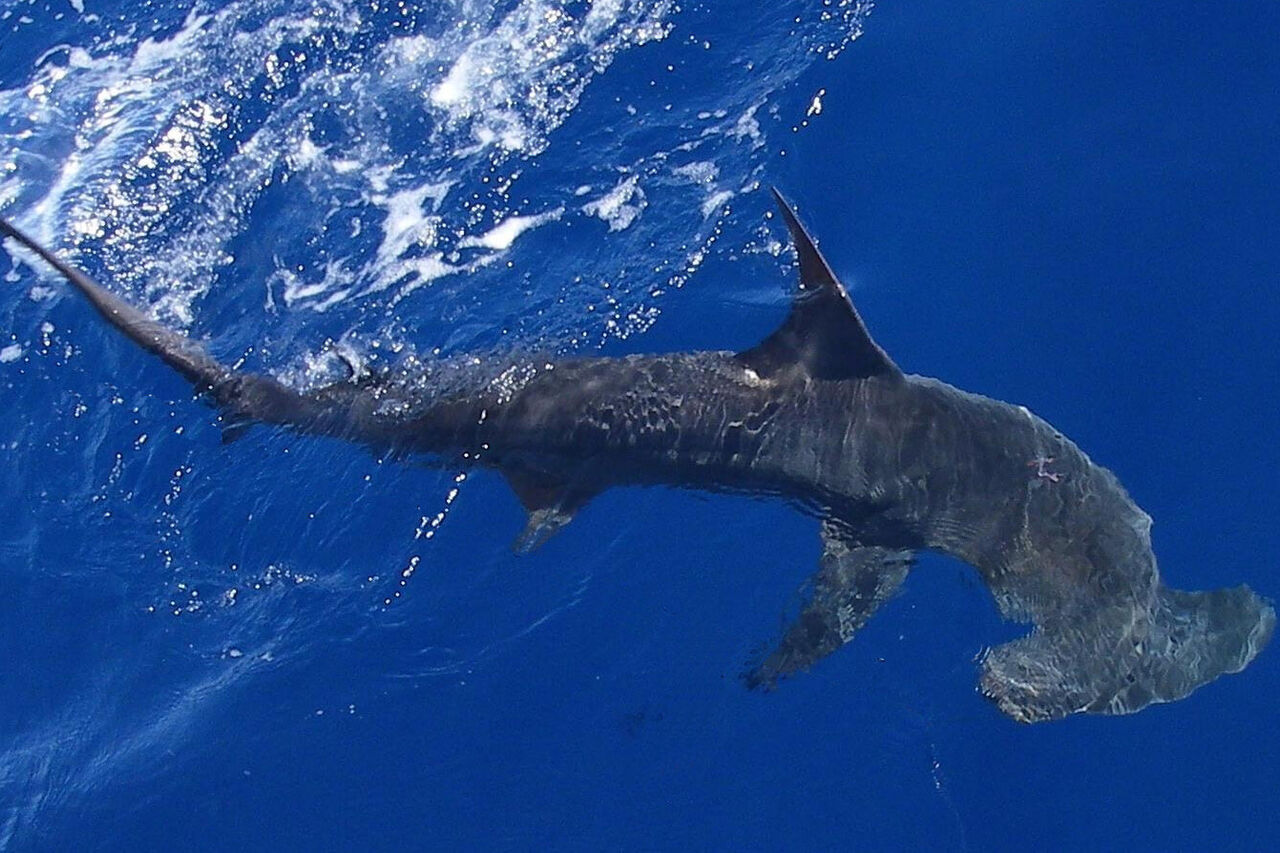
Triakidae aka. houndsharks
Houndsharks are easily distinguishable from other ground sharks as their second dorsal fin is just as large as their first. They are small sharks that are well adapted for hunting small fishes and for bottom feeding. We find a large variety of houndsharks in South African waters, including the school shark (Galeorhinus galeus), pencil shark (Hypogaleus hyugaensis), flapnose (Scylliogaleus quecketti) and the spotted gully shark (Triakis megalopterus) - which you can see at the Two Oceans Aquarium.

Bullhead sharks are a small order with only nine known living species - the largest barely reaching 1.5m long. What makes them all unique is that their mouths are far back on the bottom of their heads, even further back than their eyes. This allows them to have more sensitive electroreceptors on their snouts to find small prey hiding in the sediment.
Only one member of the bullhead shark order is found in South Africa, the whitespotted bullhead shark (Heterodontus ramalheira).

Carpet sharks form a small, but diverse order, ranging from the marvellously camouflaged wobbegongs of Indonesia to the strangely ridged nocturnal sharks.
Rhinocodontidae aka. whale sharks
In South Africa, we are blessed by the presence of the biggest and best of the carpet sharks, in fact, the largest living fish species of them all - the whale shark (Rhincodon typus).

Ginglymostomatidae aka. nurse sharks
Nurse sharks are a diverse family of nocturnal sharks that use sensitive barbels and electro-sensitive cells to detect shellfish, fish and rays that lie dormant or buried in the sediment at night. They have powerful bellows-like throat structures that allow them to rapidly suck in prey. Their diets are diverse, and they are one of the few groups of shark known to be able to feed on algae and coral if needed. In South Africa, we see the tawny nurse shark (Nebrius ferrugineus) in the waters of northern KwaZulu-Natal.

Stegostomatidae aka. zebra sharks
The warm waters on South Africa's eastern and southern coasts are home to the sole species of this family, the zebra shark (Stagostoma fasciatum). This nocturnal shark is a solitary nocturnal hunter of shellfish, sea snakes and small fish. It is usually solitary, but does gather in large numbers to mate - a behaviour that has, unfortunately, made them a target of commercial fisheries. Zebra sharks are endangered.

Dogfish are a large order of sharks that share a number of characteristics with catsharks, but are otherwise very variable in size and shape. Members of this order possess some unusual traits - glow-in-the-dark organs, active camouflage and weirdly shaped teeth.
Dalatiidae aka. kitefin sharks
Kitefin sharks are small, cigar-shaped sharks with various adaptations that make them particularly well suited to life in the deep sea, such as bioluminescence, large fat-filled livers and short fins. Although unusual, South Africa has a number of kitefin sharks, including the kitefin shark (Dalatias licha) itself, after which the whole family is named, the longnose pygmy shark (Heteroscymnoides marleyi) which all inhabits the coast of KwaZulu-Natal. Off our West Coast, we see some of the more famous kitefin shark species, like the cookiecutter shark (Isistius brasiliensis) and the glow-in-the-dark taillight shark (Euprotomicroides zantedeschia).
#SharkWeek obscure #shark #7 (last one!): the taillight shark (Euprotomicroides zantedeschia)pic.twitter.com/uMIkAwZE8W" class="redactor-autoparser-object">http://t.co/lqTwwDJYer &n...
— Brit Finucci (@BritFinucci) July 11, 2015
Echinorhinidae aka. bramble sharks
Bramble sharks are a family of two very rare and little known sharks, characterised by their prickly appearance. All sharks are covered in protective scales called dermal denticles, but bramble sharks have taken this to the next level by fusing some of these scales together to form thorn-like body armour. Only the titular bramble shark (Echinorhinus brucus), also known as a braamhaai, is found in South Africa where it ranges our whole coastline hunting smaller sharks, particularly deepwater species.

Oxynotidae aka. rough sharks
Rough sharks are small, unusual-looking sharks with narrow, compressed bodies that give them a triangular shape when viewed from the side. They have spines, similar to those of stingrays, at the tip of each dorsal fin and also possess thickly armoured scales and bioluminescence. If there is one family of sharks that seems to have all the features, it's the rough sharks. South Africa sees the angular roughshark (Oxynotus centrina) which inhabits the entire eastern coast of the Atlantic, from Norway to the Cape of Good Hope, where they hunt deep sea worms. They have also been known to round South Africa to reach Mozambique on rare occasions.
RT @SharkDevocean: Who says #deepsea#sharks aren't cute! Say hello to Angular rough shark @IUCNShark
PC: J. Franke pic.twitter.com/aX7CrIgHlU
— Nicholas Dulvy (@NickDulvy) February 24, 2014
Somniosidae aka. sleeper sharks
The sleeper shark family consists of a number of slow-moving, seemingly inactive sharks, perhaps most famously represented by the Greenland shark which is known to live over 400 years. South Africa might not see the Greenland shark, but that doesn't mean we don't have sleeper sharks of our own! The southern sleeper shark (Somniosus antarcticus) which inhabits the Southern Ocean and sometimes visits the South African coast, is similar to the Greenland shark, and wasn't recognised as a separate species until 2004. South Africa also has a regular population of the deepest living shark species in the world, the Portuguese dogfish (Centroscymnus coelolepis), which are known to thrive at depths of almost 4km!

Squalidae aka. spiny dogfish
Spiny dogfish are usually smooth to the touch, have slender bodies and are known to hunt fish in packs, sometimes even hunting fish much larger than themselves. These dogfish are also the only sharks to possess venom, in sharp spines on their backs, but only use these in defence. South Africa has quite a diverse assortment of spiny dogfish in the shallows, including the piked spurdog (Squalus megalops) and roughskin spurdog (Cirrhigaleus asper).

Centrophoridae aka. gulper sharks
Gulper sharks are a diverse family, similar to dogfishes but with various adaptations that make them better equipped to hunt active prey, like fish and octopuses, such as long snouts and large eyes. South African longline fishermen may know the titular gulper shark (Centrophorus granulosus) which is often caught as bycatch. Lesser-known species that inhabit our waters are the arrowhead dogfish (Deania profundorum), little gulper (Centrophorus uyato), leafscale gulper (Centrophorus squamosus), birdbeak dogfish (Deania calcea) and the smallfin gulper shark (Centrophorus moluccensis).
Although rarely seen by humans, lantern sharks are found in deep waters all over the world, where they use specially adapted light-producing cells to attract prey. Deep waters around South Africa include a huge diversity of lanternsharks, such as the sculpted lanternshark (Etmopterus sculptus), black dogfish (Centroscyllium fabricii), velvet belly (Etmopterus spinax), and thorny lanternshark (Etmopterus sentosus).

Angelsharks are an unusual order of sharks that are squat, flattened and have large pectoral fins - in other words, they are sharks that resemble rays. These are not to be confused with guitarfish, which are rays that resemble sharks! These sharks live only in calm, shallow waters and cannot survive in open ocean conditions, so most species are isolated to very small areas. South Africa's only resident angelshark is the African angelshark (Squatina africana), which inhabits the Eastern Cape and KwaZulu-Natal coasts, but rare sightings of the smoothback angelshark (Squatina oculata) and sawback angelshark (Squatina aculeata) off the West Coast have occurred too.

Sawsharks, not to be confused with the more popular sawfish - which are actually rays, are a unique order of sharks that have long snouts, edged with sharp teeth. All sawsharks have two barbels, which look like whiskers on their snouts. They feel their way along the seafloor with these barbels, and when they detect food, they are able to slash it with their toothy snouts. South Africa is home to the sixgill sawshark (Pliotrema warreni), which is very usual as it is the only shark outside of the cow shark order (the next stop on our list) that has more than five gill pairs, and the African dwarf sawshark (Pristiophorus nancyae).


Hexanchiformes are the most evolutionary primitive order of true sharks, possessing few of the adaptations of modern sharks. In fact, there is evidence to suggest that hexanchiformes may have survived the Permian extinction a quarter of a billion years ago. This order contains cow sharks and the elusive frilled shark - both of which are found in South Africa's waters. On our western and southern coasts, scuba divers regularly encounter broadnose sevengill sharks (Notorynchus cepedianus) and off the KwaZulu-Natal coast, one might encounter a sharpnose sevengill (Heptranchias perlo). Perhaps South Africa's most enigmatic sharks are the Southern African frilled sharks (Chlamydoselachus africana) which is believed to live off all our coasts at depths of over 1km.

If you'd like to learn more about Sharks, be sure to follow #Sharktober!
Related News
Sign up to our Newsletter
Receive monthly news, online courses and conservation programmes.
